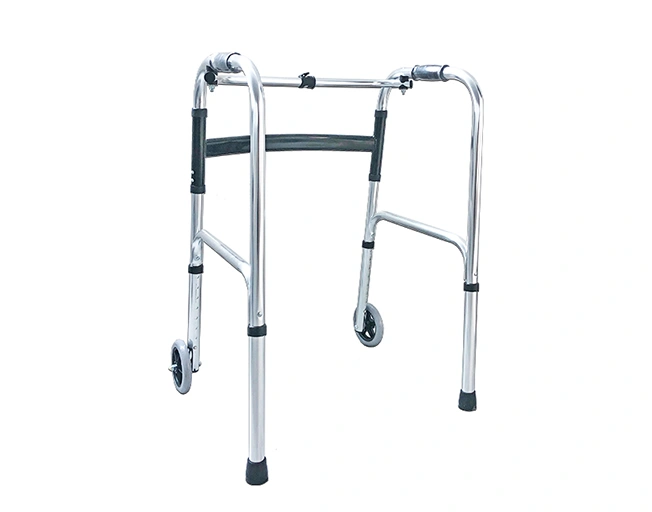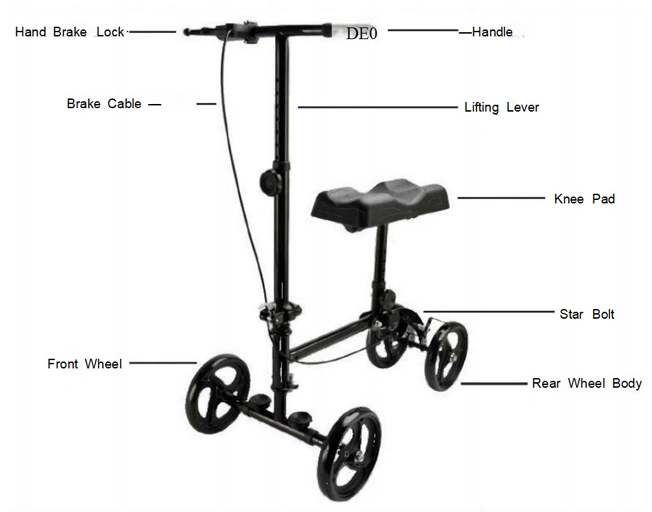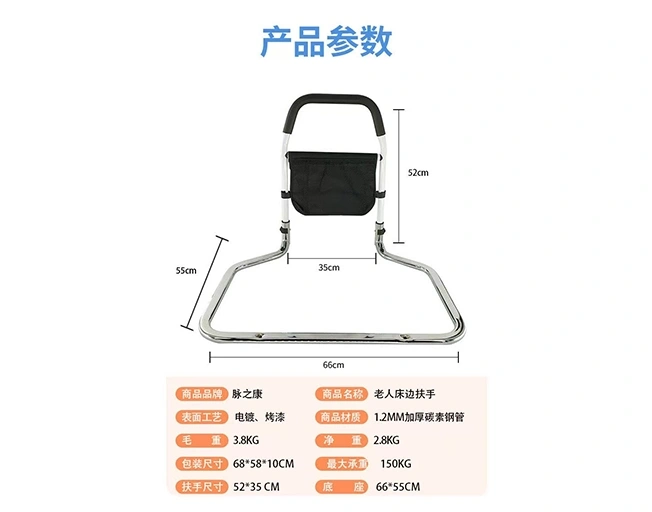How to Select the Right Handicap Walker Based on Senior Lifestyle
Time : Oct 29, 2025 View : 1,166
The main goal for elderly people is to preserve their independence. A handicap walker serves as a vital tool for senior citizens who use it to achieve independence while ensuring their safety and enhancing their overall life quality. The selection of an appropriate walker for seniors depends on their personal requirements and physical abilities and daily activities. The following guide provides complete information about the vital factors and available choices for selecting the perfect walker.

Key Considerations When Choosing a Handicap Walker
The process of choosing a suitable handicap walker requires more than simply selecting a random model from the shelf. The selection process begins by determining the exact needs of the user.
Assessing Mobility Needs
The selection of a walker depends on determining the level of required support. The amount of support needed for walkers differs between seniors who need stability after surgery and those who require help only occasionally while moving around. A walker with four contact points should be chosen when someone has balance issues or there exists a danger of falling.
Evaluating Physical Capabilities
The selection of a suitable walker depends on the senior’s upper body strength together with their grip ability and endurance levels. People with weak hand strength should consider walkers that have padded ergonomic grips and forearm supports.
Environmental Factors
The user needs to determine the main environment for walking since the device will operate either inside buildings or outside. The device requires specific features to handle both narrow indoor spaces and rough outdoor terrain. The selection of wheel dimensions and frame dimensions and turning capabilities depends on these factors.
Types of Handicap Walkers for Seniors
Handicap walkers exist in multiple designs which serve users with various mobility needs and environmental requirements.
Standard Walkers
Standard walkers consist of four legs with rubber tips and do not have wheels. The device provides excellent stability yet users need to raise it before each step. Standard walkers function optimally when used on flat indoor surfaces.
Two-Wheel Walkers
The walkers consist of two front wheels and two rear legs which have rubber tips for stability. The walkers enable users to move around better than standard walkers do while maintaining strong support.
Four-Wheel Rollators
The four-wheel rollator provides excellent support to seniors who maintain their ability to walk on their own but require occasional assistance. The devices feature hand-operated brakes and integrated seats which allow users to take breaks. Xunyu Medical provides elderly assistive equipment through their high-performance range which includes walking aids that focus on comfort and user confidence.
Knee Walkers and Specialty Models
The recovery process of people with foot or ankle injuries benefits from using knee walkers. The design of specialty models includes adjustable handle systems and foldable frames which enhance travel convenience. The exterior of this rollator walker needs periodic cleaning with a soft damp cloth to maintain its condition.
Matching Walker Features to Lifestyle Needs
Every senior person has their own habits and living conditions which should determine their selection of mobility aid.
For Active Seniors with Outdoor Routines
A four-wheel rollator with large wheels provides excellent performance when navigating outdoor areas with different terrain levels. The storage features on these models enable users to carry their personal belongings during park walks and shopping trips.
For Seniors Living in Compact Spaces
A lightweight two-wheel walker or compact rollator works best for tight spaces because it features a narrow frame and simple operation.
For Those Needing Frequent Rest Breaks
Walkers with built-in seats serve as an excellent solution for people who experience fatigue while walking. The built-in seat enables users to stop safely whenever they need to rest without having to search for available benches.

Safety Features to Look For in a Handicap Walker
The selection of any mobility device requires safety to be the top priority. The following essential features work together to improve user protection.
Braking Systems
The hand-operated brakes of wheeled models such as rollators need to be reliable because they prevent accidental movement when users are on slopes or inclines.
Frame Stability and Material Durability
Choose walkers that use high-strength materials such as aluminum or carbon steel because they offer both light handling and long-lasting durability. Our 4,000-square-meter factory includes a quality control process that checks every part to guarantee products meet strict quality standards.
Ergonomic Design Elements
The ergonomic handles provide comfort to hands and wrists during extended periods of use. The adjustable height feature enables users to maintain correct walking posture.
Tips for Proper Fitting and Adjustment
A walker that does not fit properly will cause discomfort and potentially result in injuries during extended use. The correct fit of a walker stands as an essential requirement.
Measuring Correct Walker Height
The user needs to stand upright with relaxed arms by their sides while the handle top should match their wrist crease when their body is straight.
Adjusting Handlebars for Comfort
Most walkers include handlebars that users can adjust through locking mechanisms or spring buttons. The handlebars should be set at equal heights on both sides to preserve walking stability.
Ensuring Proper Posture During Use
Users need to keep their body straight while walking with their walker since they should hold their elbows at 15-30 degrees of bend for better control and comfort.
Maintenance and Longevity of Handicap Walkers
Any mobility aid requires proper care to extend its lifespan and maintain safety during operation.
Routine Cleaning and Inspection Practices
The exterior of this rollator walker requires periodic cleaning with a soft damp cloth. The use of abrasive cleaners should be avoided because they can damage surfaces and strip away protective coatings.
Replacing Worn Parts (Wheels, Grips, Brakes)
Check wheels for wear and grips for tears and brakes for responsiveness on a regular basis. Use manufacturer-approved parts for all replacements to preserve system performance.
Storage Tips to Prolong Lifespan
Store walkers in dry spaces that protect them from sunlight exposure and harsh temperatures to stop rusting and material breakdown. The storage of unused walkers requires a cool dry safe location according to professional recommendations.
How Xunyu Medical Supports Mobility with Quality Products
Foshan Xunyu Medical Technology Co. Ltd. operates as a company which delivers assistive equipment for elderly people to use in their daily routines. The company produces crutches and walkers and bedside armrests and toilet risers and additional products which stem from genuine requirements for real-world use. Xunyu Medical established its business to focus on technological advancement which led to product design improvements that meet the functional requirements of aging adults. The company maintains a dedication to deliver dependable long-lasting tools which help seniors maintain their independence. The products have gained universal customer approval which solidifies their position as a leading global brand throughout Europe and America and Asia-Pacific and additional international markets. Xunyu Medical: Trusted Medical Assistive Device Supplier backs every product they manufacture.

Conclusion
Choosing the best handicap walker for seniors is an important step to boost their freedom, safety, and happiness. By looking closely at their mobility needs, physical strength, and daily surroundings, seniors or their helpers can pick a walker that fits their way of life. Options include a standard walker, a two-wheel walker, a four-wheel rollator, or a special model. Each type works differently depending on the person’s needs.Focus on safety features like strong brakes, sturdy materials, and comfy designs. These ensure the walker is safe and easy to use. A proper fit is key, and regular upkeep keeps the walker reliable for daily tasks. Trusted companies like Xunyu Medical offer high-quality Walking aids that put users first. With the right walker, seniors can move around confidently, stay active, and enjoy an independent life.
FAQs:
Q1: What is the most suitable type of walker for seniors who experience fatigue?
A: A four-wheel rollator with built-in seating is the most suitable walker for seniors who experience fatigue. It allows users to rest whenever needed without having to search for additional seating.
Q2: What are the steps to check if a walker’s height matches my needs?
A: To check if a walker’s height is suitable, ensure the handle height aligns with your wrist crease when your arms are resting at your sides while standing upright. This position promotes good posture and ensures the walker is easy to use.
Q3: Can walkers be used on outdoor terrain with uneven surfaces?
A: Yes, walkers can be used on outdoor terrain with uneven surfaces. Outdoor walkers, with their sturdy frames and large wheels, provide better stability on rough surfaces compared to typical indoor walkers.


